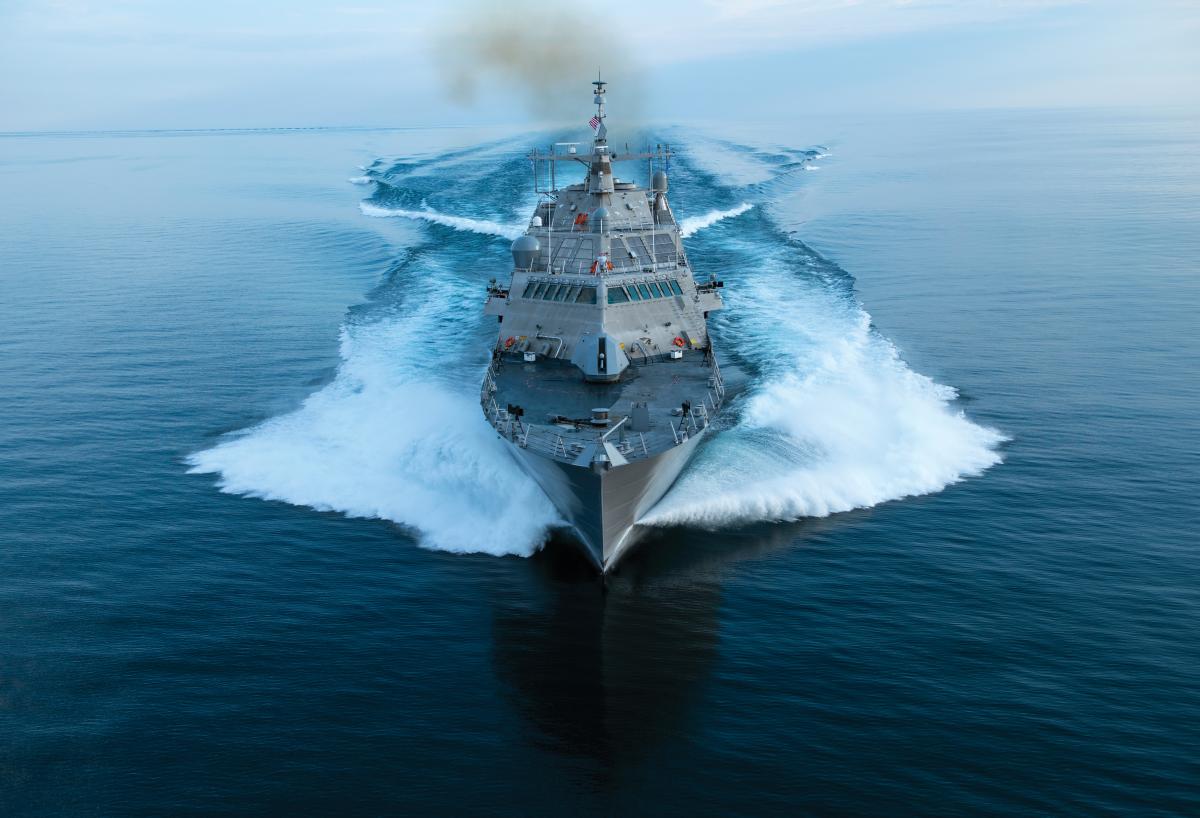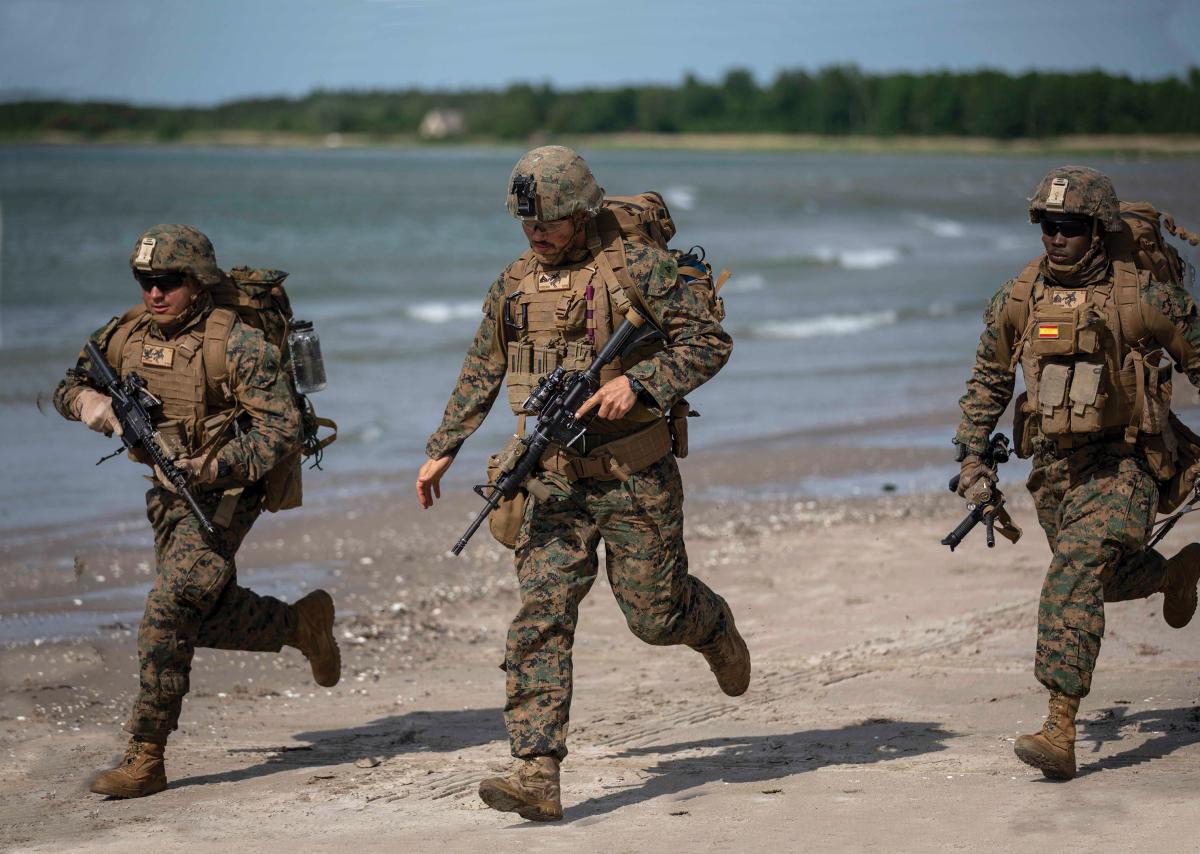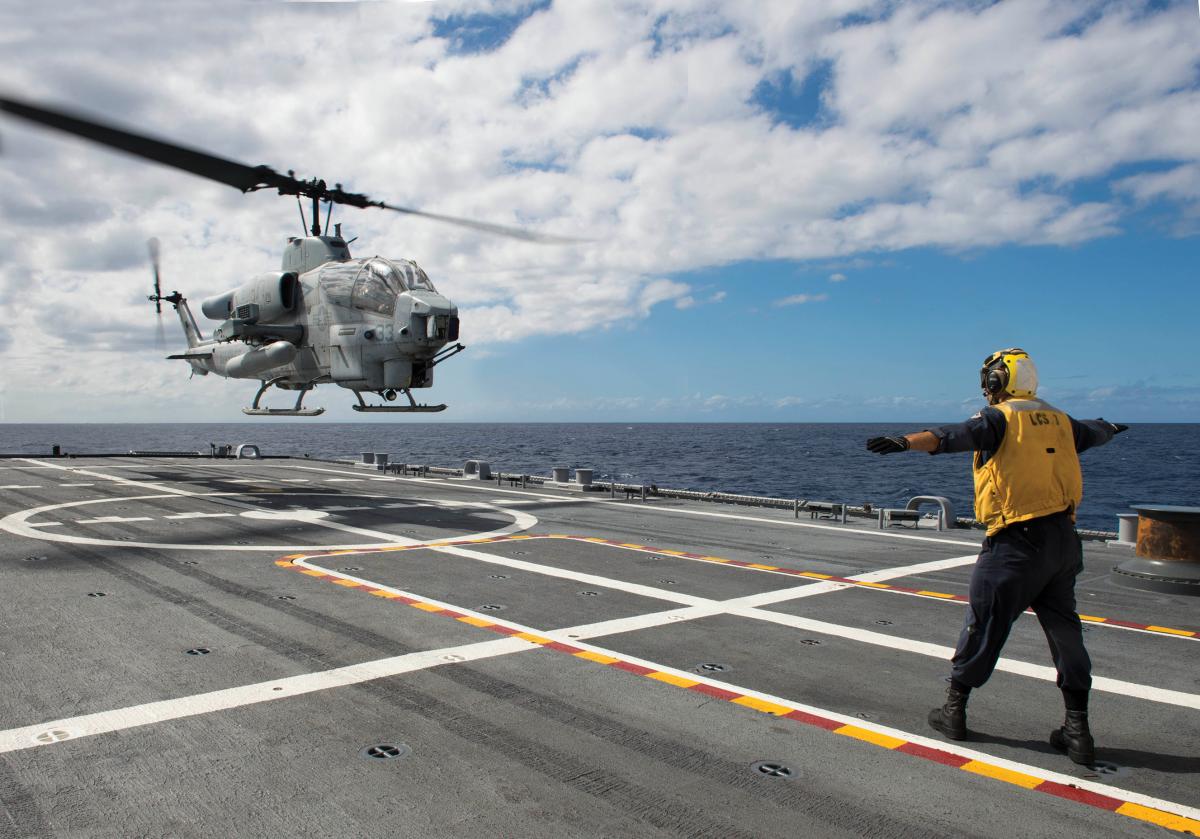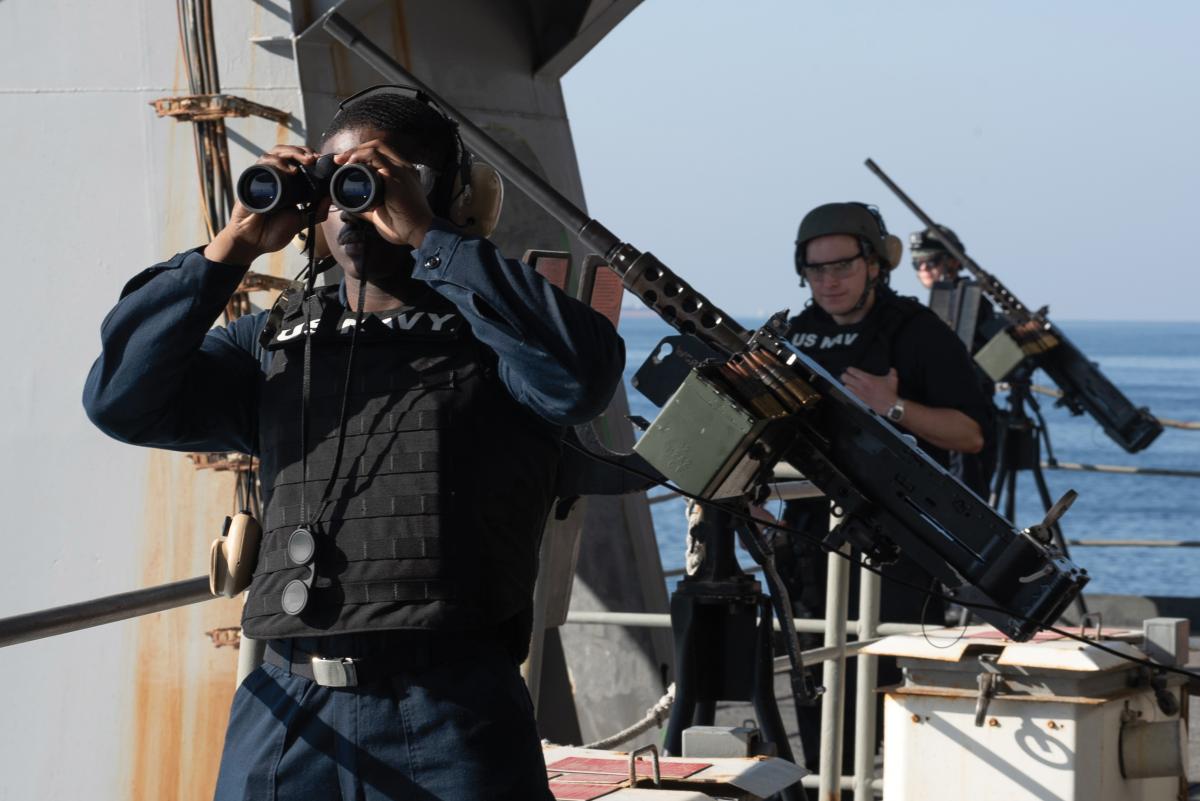For thousands of years armed forces have used cavalry to gain an asymmetric advantage on the battlefield. Cavalry provides a ground force commander the flexibility to conduct scouting operations, raids, feints, and diversions without committing a larger force. Many of the tasks traditionally assigned to cavalry align with the missions of the Marine Corps today.
The Recon Marines and Marine Raiders fulfill many of the missions that might be assigned to a 21st-century cavalry, but to conduct mobility operations these units must use the available large- and medium-sized mobility platforms. Marine expeditionary units (MEUs) would benefit from an additional, lightweight platform that can support cavalry-like operations and give the MEU commander greater flexibility. The littoral combat ship’s (LCS’s) two classes could round out the MEU’s maneuver capability. This idea is worthy of experimentation despite potential resistance from both the Navy and the Marine Corps.
Flexibility For the MEU
As the United States disengages from sustained land wars far from shore, the MEU once again will take a prominent place in national security. More than 80 percent of the world’s population lives and conducts business in and around the littoral zone. Piracy, antiaccess weapon systems, and increased competition for limited resources are a few of the challenges faced in these zones. Responding to these challenges—whether as a deterrent presence or in combat operations—will be a “come as you are” affair.1
The Marine air-ground task force (MAGTF), and more specifically the MEU, is the Marine Corps’ day-to-day answer to the demand for expeditionary forces from the sea. New challenges have emerged in the littorals that will “stress the Marine Corps’ ability to command and control, provide air and surface lift, resupply the force, provide casualty evacuation and more.”2 Looking beyond traditional mobility platforms could provide an answer.
Currently, amphibious ready groups (ARGs) present a heavyweight fighter—the LHD- or LHA-class amphibious assault ships—and two middleweight fighters: the amphibious transport dock (LPD) and the dock landing ship (LSD). These platforms support a long-term, self-sustainable force that can remain forward deployed to handle complex challenges. Experiments attaching a destroyer to the ARG are worthy efforts to increase the ARG/MEU’s offensive and defensive firepower. Nonetheless, MEU commanders can use all the mobility they can get for their ground combat element. A lightweight fighter combined with the right mission package could provide a MEU commander with a cavalry-like force to increase the unit’s flexibility and agility.
One of the most valuable characteristics of the ARG/MEU is its ability to conduct disaggregated operations across different regions or subregions. For example, detaching an LPD during split ARG operations allows a MEU to provide effects in more than one location. A lightweight fighter would provide another option for split ARG operations and allow a MEU commander to address a small mission without committing a larger force than needed, in much the same way historical ground forces could detach cavalry units to execute small-force operations in other areas. The lightweight fighter could be deployed on its own with a task-specific load, or it could accompany a detached LPD to provide additional maneuver capability and firepower.
Another benefit of adding a lightweight fighter is the additional maneuverability it would provide the MEU commander within a region. For example, the lightweight fighter could use its speed to conduct advance scouting of a port or strait before the arrival of the ARG. An agile lightweight fighter could draw out an enemy by conducting a feint assault or a demonstration in the same way a commander would use cavalry to find and draw an unprepared enemy into a decisive engagement. In addition, the lightweight fighter could be used as a flanking force to exploit a critical enemy vulnerability exposed by the larger heavyweight fighters within the MEU. The lightweight fighter also could be used to take a secondary objective in the region without diluting the power of the main body.
Clearly the addition of a lightweight fighter would give the MEU commander greater flexibility in employing forces assigned. The question is: Does a new platform need to be built for this mission, or is there an existing platform that can fill this need?
What does a Lightweight Fighter Look Like?
Fortunately, there is no need to design, develop, and build a new platform for the lightweight fighter mission. The Navy’s LCSs could provide this capability for the MEU/ARG team.
The LCS comes in two classes: the mono-hull Freedom class and the tri-hull Independence class. Both variants are small, frigate-sized vessels that can achieve speeds in excess of 40 knots and operate in both littoral waters and the open ocean—perfect for a cavalry-like force. Their shallow draft means both classes can access three times more ports than the Navy’s larger platforms.3 In addition, the LCSs are outfitted with large bays that support mission packages contained within standard 20-foot container boxes.4 Mission packages could be built to accommodate additional berthing space, extra logistical support, ammunition and weapon storage, casualty evacuation, or humanitarian aid.
Both classes would bring slightly different capabilities to the MEU. The Independence class has a larger flight deck and hangar that can accommodate a CH-53 helicopter for heavy lift and transport.5 The Freedom class has a larger mission bay—to accommodate more personnel and supplies—as well as a flight deck and hangar that can accommodate a possible Huey/Cobra team.6 Both classes could work in concert to spread-load a lightweight ground, air, and logistical combat element across two cavalry-like platforms. Conceivably, the future ARG would consist of one LHD/A, one LPD, one LSD, and one of each LCS class, which would complement each other and provide mutual support. By adding two LCSs, the MEU commander could flex a scalable version of the MAGTF like never before.
Disruptive Innovation: Not Always Welcome
Both the Navy and Marine Corps could resist using the LCS as a lightweight fighter. The Navy already has allotted specific missions for the limited ships of the planned LCS buy—including mine warfare, antisurface, and antisubmarine—and might be reluctant to change them. With the current MEU structure, however, the addition of a lightweight fighter mission would take less than half of the 33 proposed LCSs from their assigned missions.7 In addition, it is possible that a ground forces element could fit within a hybrid surface warfare/MEU element.
The Marine Corps might resist the idea out of concern that it could reduce the Navy’s incentive to maintain adequate numbers of heavyweight and middleweight ships. However, the longstanding and growing importance of the MEU’s role in U.S. national security would help mitigate this concern. Even so, the Marine Corps would need assurances that the Navy would continue to purchase and provide heavyweight fighters to the ARG/MEU team.
Despite potential resistance, it is clear the Navy and Marine Corps are open to experimentation in how they conduct operations in the littorals, as demonstrated by the recent successful deployment of Littoral Combat Group 1—which paired one LPD with one destroyer.8 It’s time to add an LCS into the mix.
Marines will have to continue disaggregated operations to handle the range of challenges and threats in the littorals. As a recent USNI News article noted, “in many ways this scenario—small pockets of Marines operating on different islands (or in different ports) to help the Navy gain sea control and to take additional territory—is nothing like the recent ARG/MEU deployments that are focused on humanitarian assistance and partner building.”9
The Navy and Marine Corps need to stretch their collective imaginations if they are to prevail in the face of this change. Leveraging the LCS falls squarely into this process. As a lightweight cavalry-like fighter, it offers vast potential to round out the MEU’s current capability and provide an additional maneuver option.
Listen to 2nd Lt. Winnefeld talk about this article on the Proceedings Podcast:
1. Richard Mills, “Littoral Combat Clip,” Foreign Policy, 2 November 2012.
2. Megan Eckstein, “Marines’ Next High-End Fight Could Call for Larger Formations, Tougher Amphibs,” USNI News, 23 January 2019.
3. Naval Sea Systems Command, “United States Navy Fact File: Littoral Combat Ship—LCS,” 5 March 2019.
4. Naval Sea Systems Command, “United States Navy Fact File: Littoral Combat Ship—LCS.”
5. The Australian Shipbuilder (Austal), “Littoral Combat Ship (LCS),” 27 April 2018.
6. Lockheed Martin, “Littoral Combat Ship (LCS).”
7. Naval Sea Systems Command, “United States Navy Fact File: Littoral Combat Ship—LCS.”
8. Megan Eckstein, “Navy Tests ‘Littoral Combat Group’ Concept That Pairs DDG, LPD in South America Deployment,” USNI News, 3 January 2019.
9. Eckstein, “Marines’ Next High-End Fight Could Call for Larger Formations, Tougher Amphibs.”






